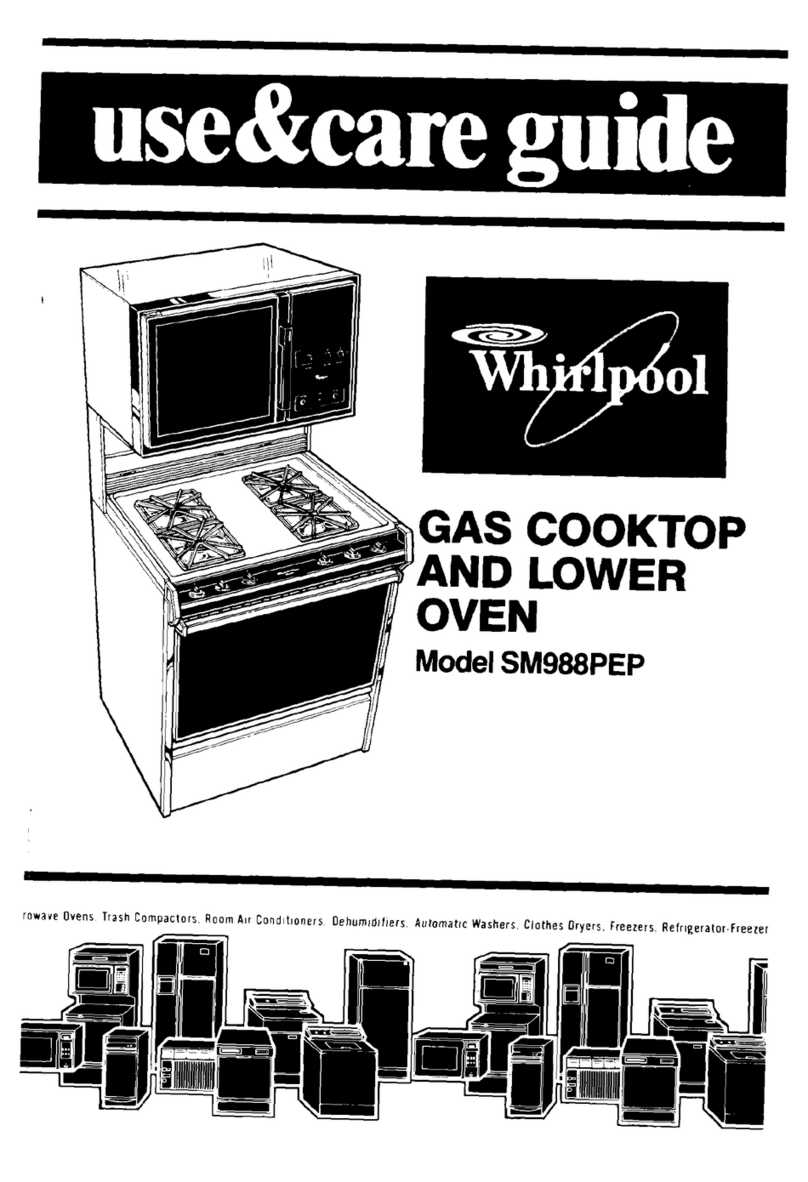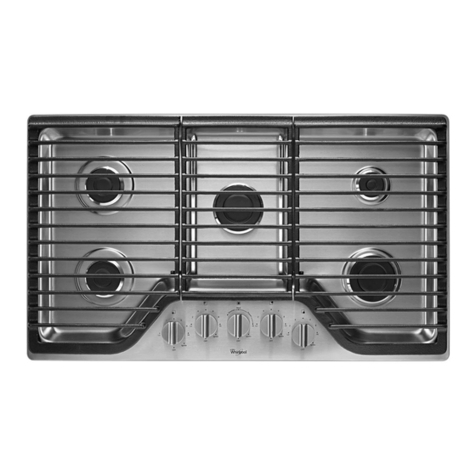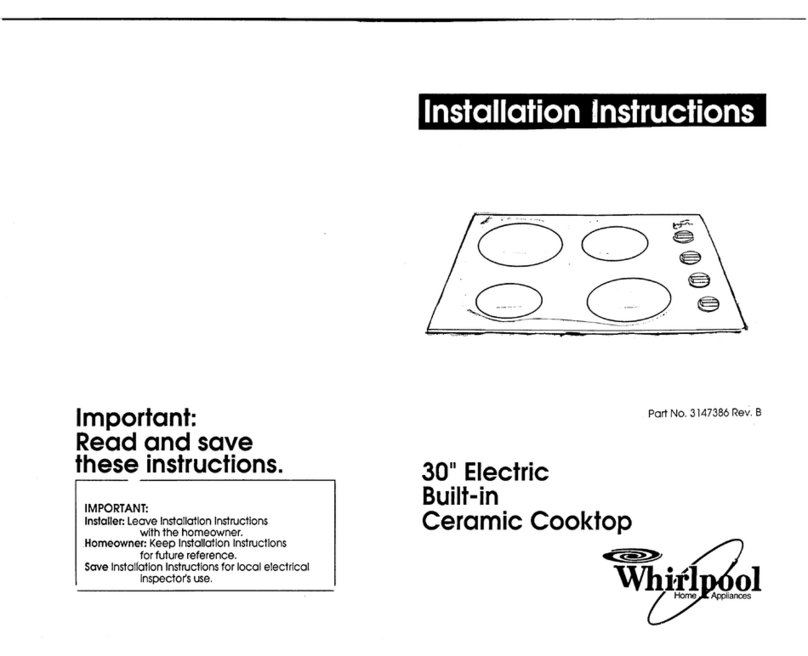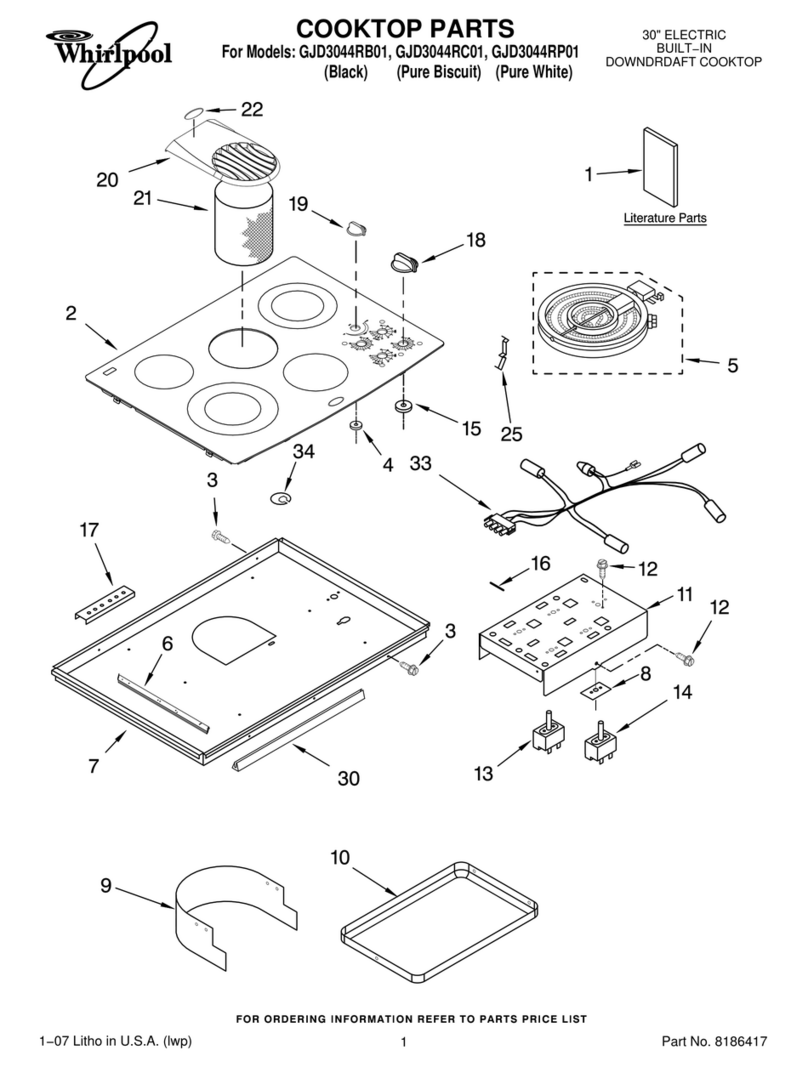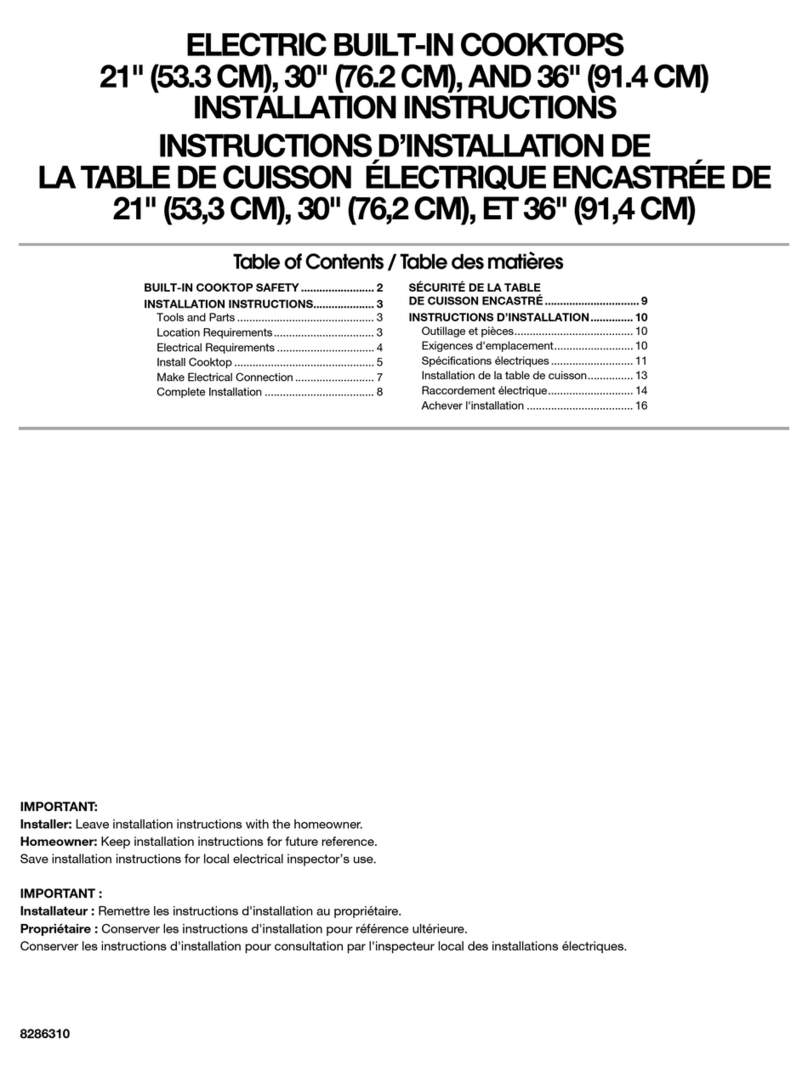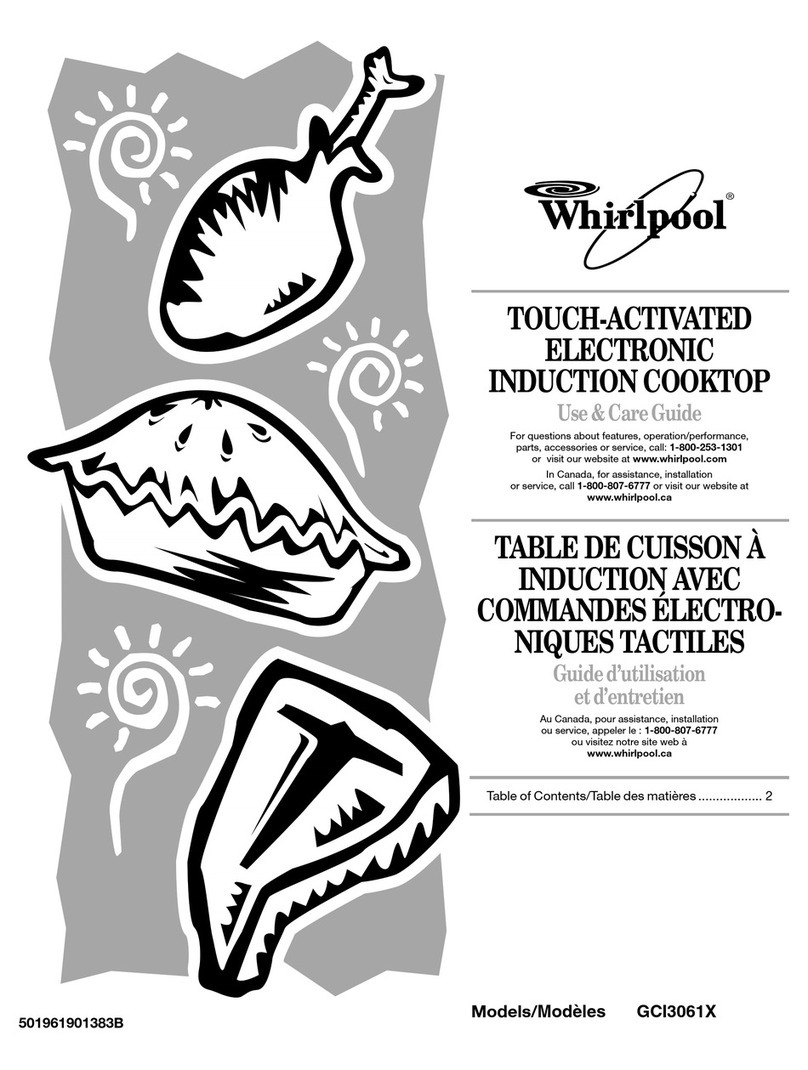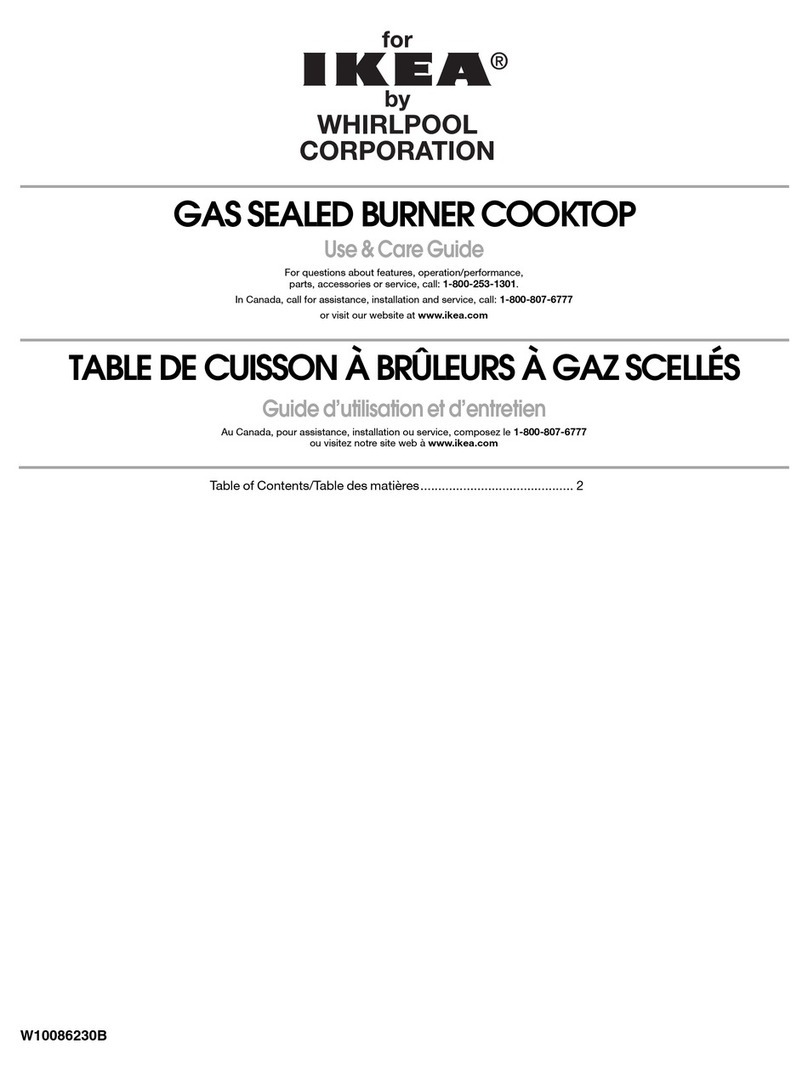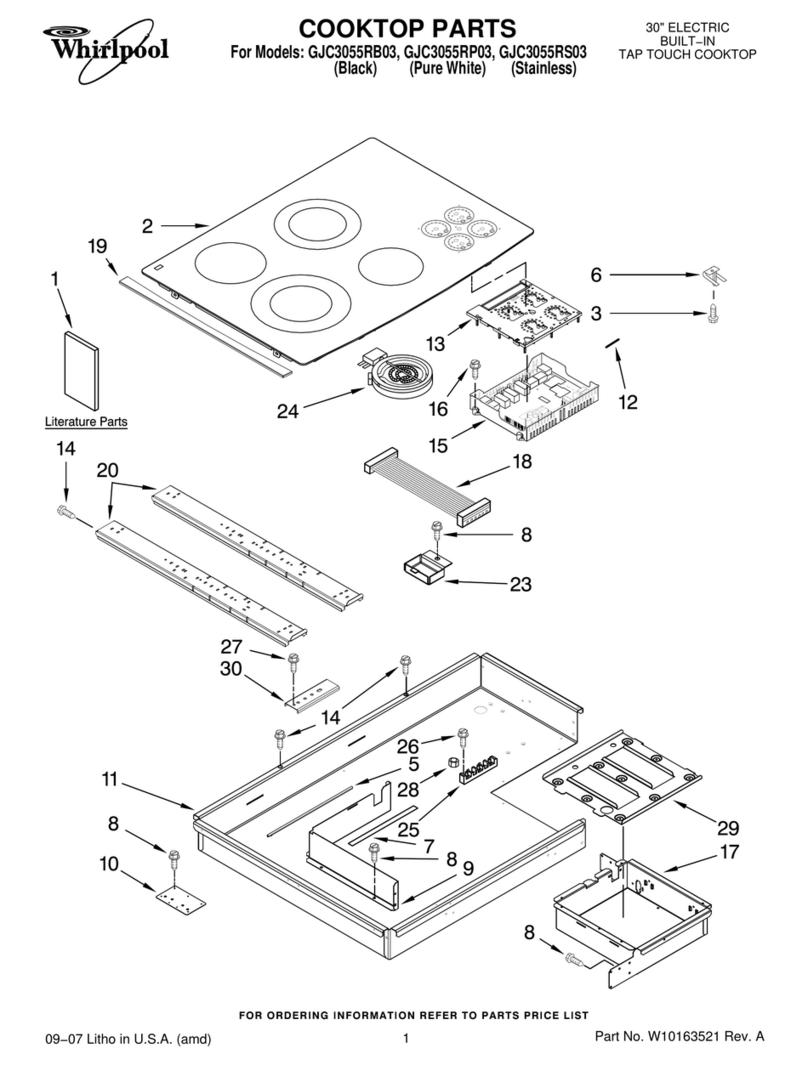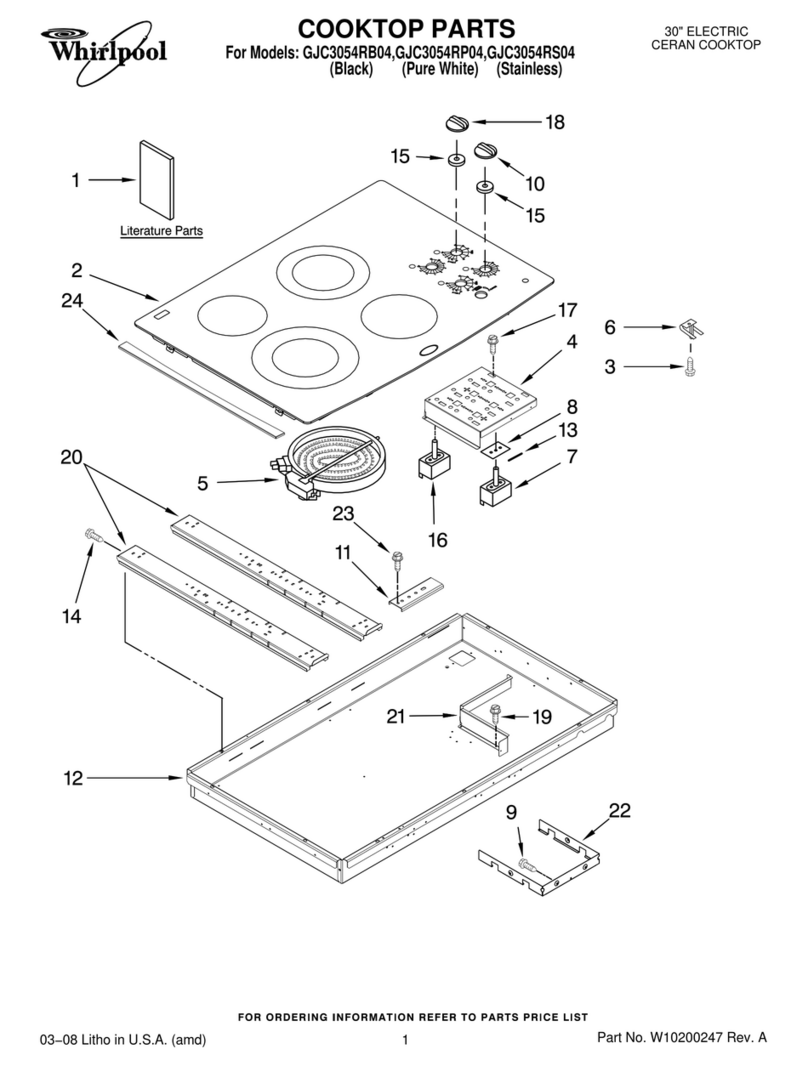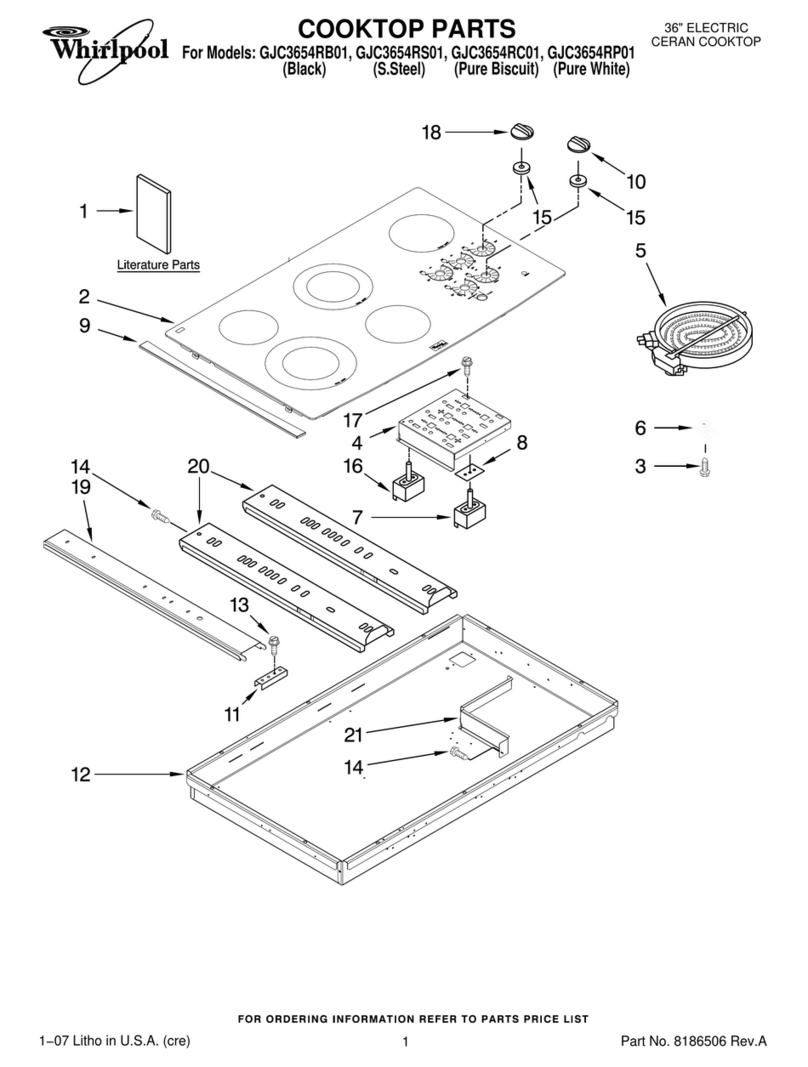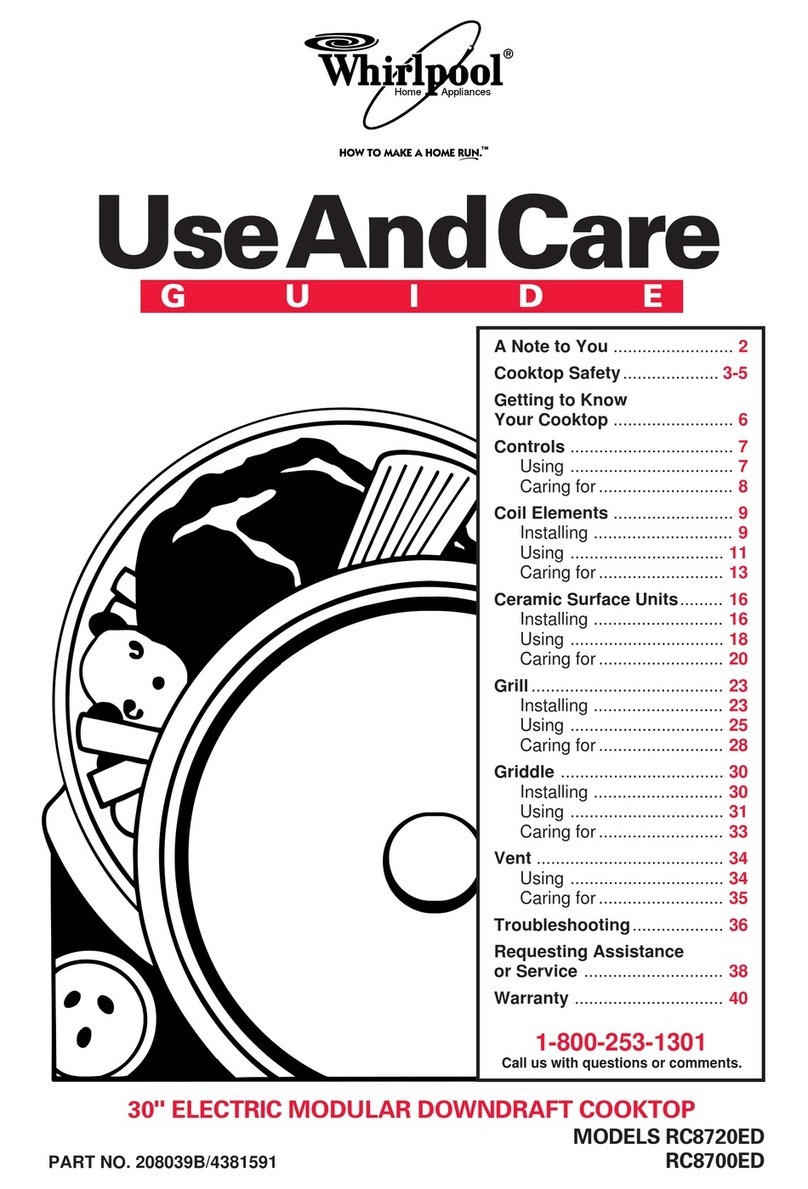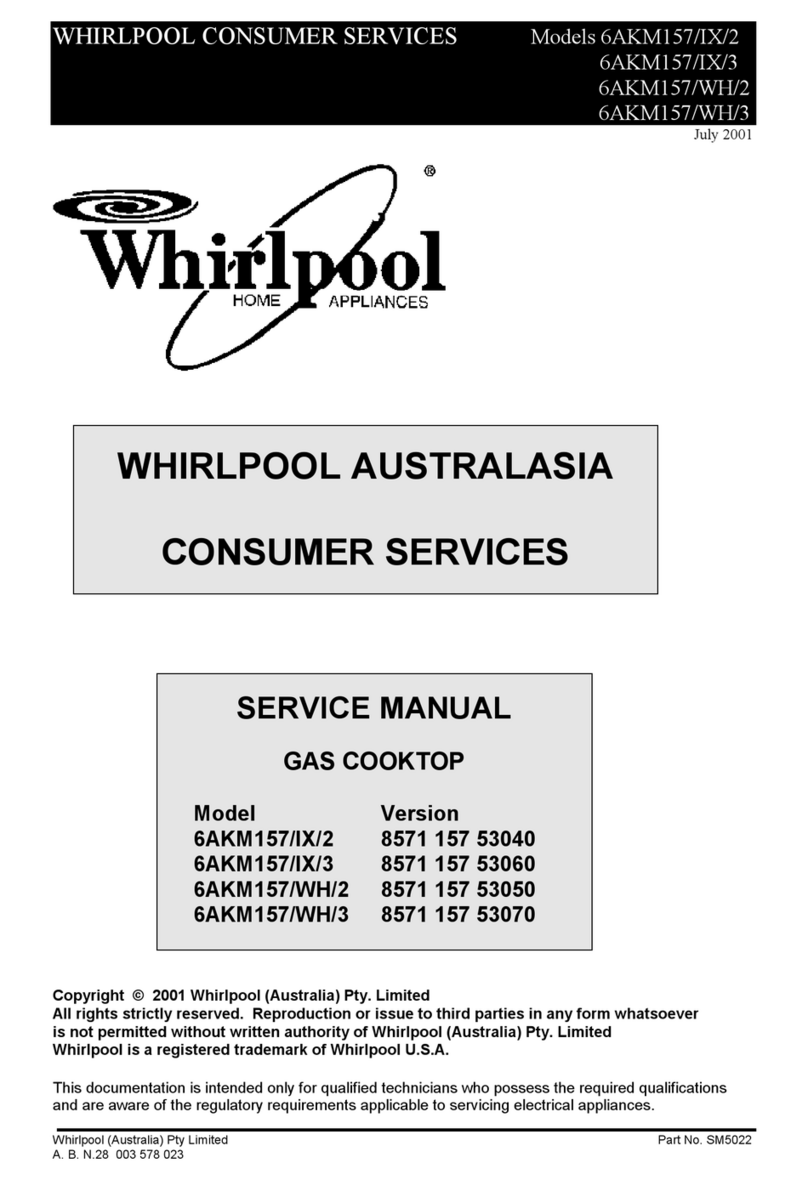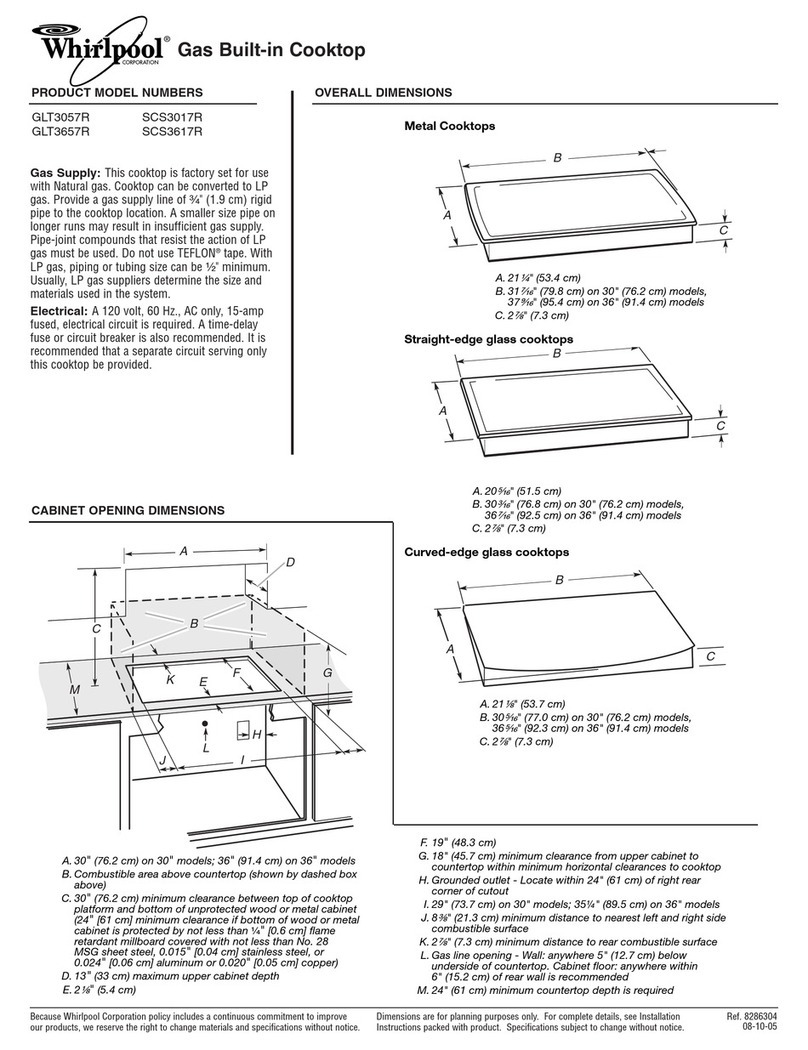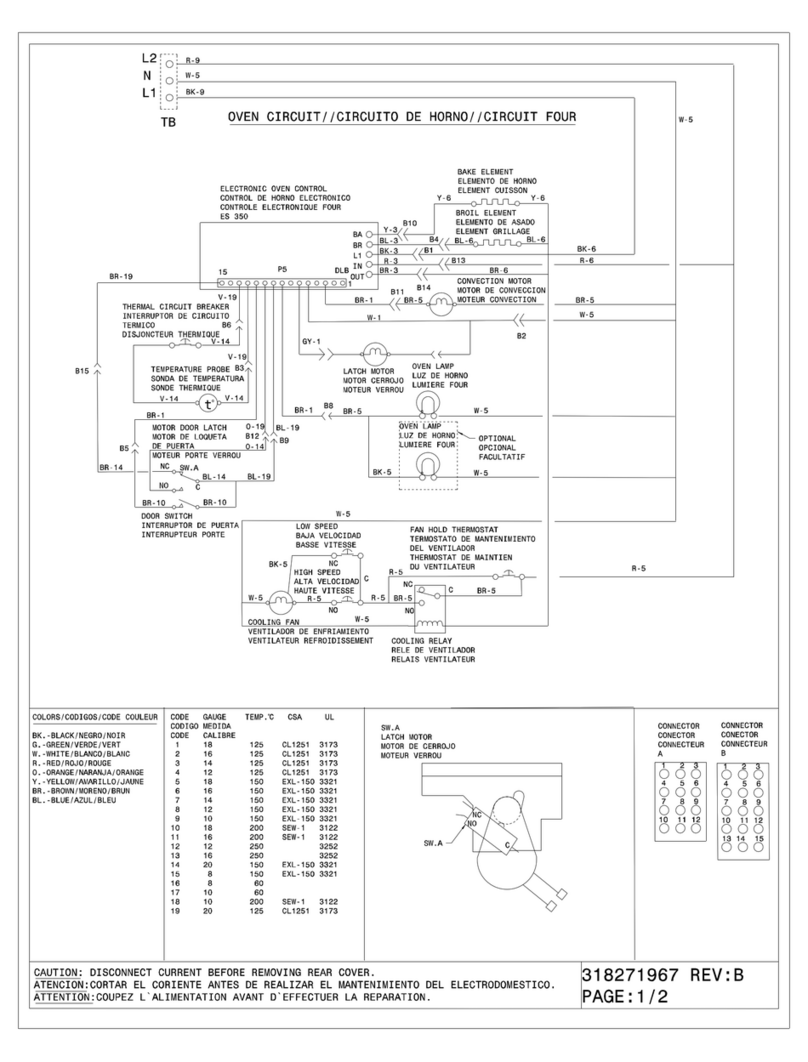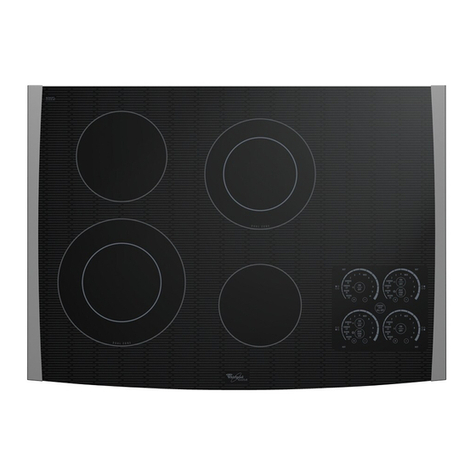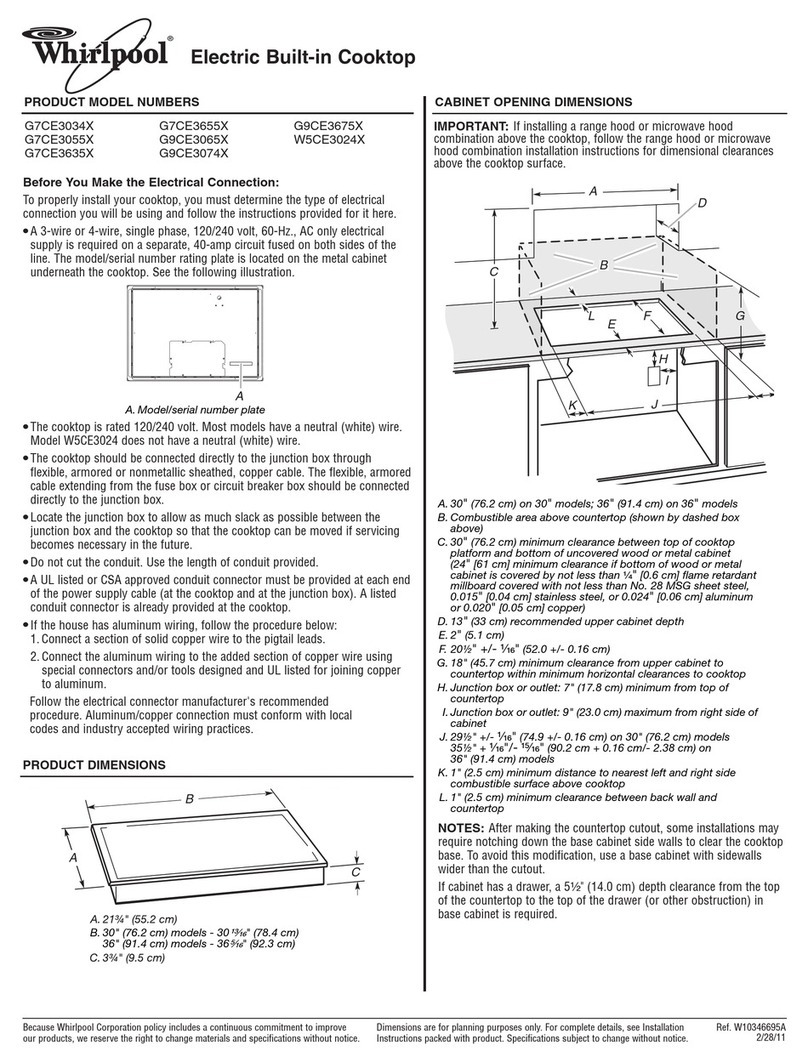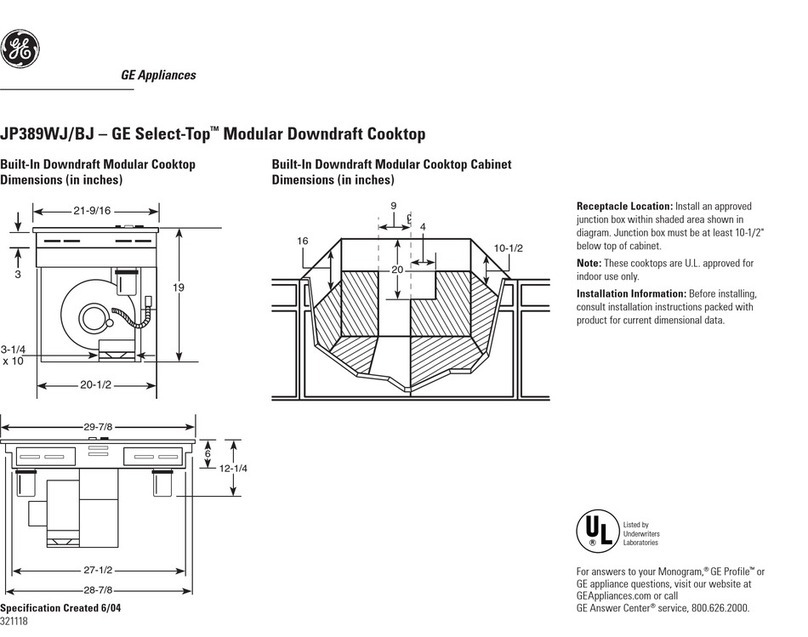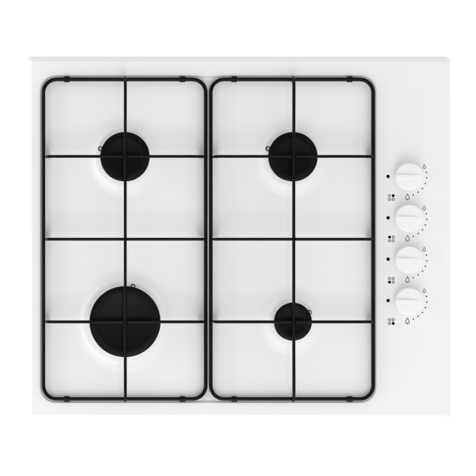Tools needed for
installation:
l
gas line shutoff valve
* L.F!f as resistant pipe-
l
New A.G.A. design-
certified flexible metal
join compound connector (4-5 teet)
v ’ 1. > a I I , ,, , ,..
tape measure/ruler
electric drill
Parts supplied for
installation:
l
l/4” x l/4:, foam sealing strip
: ;/g:,;;2 foam sealing strlp
l
2 clamps
Gas supply
requirements
Explosion Hazard
Use a new AGA approved gas supply
line.
Failure to do so can result in death,
explosion, or fire.
Observe all governing codes and
ordinances.
Important: Cooktop must be connected to
a regulated gas supply.
A
n
This installation must conform with
local codes and ordinances, In the
absence of local codes, installations must
conform with American National Standard,
National Fuel Gas Code ANSI 2223.1 -
latest edition.**
B
n
Inout ratinas shown on the
serial/rating plate are for elevations up to
2,000 feet. For elevations above 2,OXl feet,
ratings are reduced at a rate of 4% for
each 1,000 feet above sea level.
C
n
The cooktop is equipped for use
with NATURAL gas. It is design-certified by
the American Gas Association for NATURAL
and LJ?gases with appropriate conversion.
The serial/rating plate, located on the
underside of the burner box, has
information on the type of gas that can be
used. If this information does not agree with
the type of gas available, check with the
local gas supplier, See Panel E for L.Pgas
conversion instructions.
Panel B
D
n
Provide a gas supply line of 3/4”
rigid pipe to the cooktop location. A
smaller size pipe on long runs may result in
insufficient gas supply. Pipe-joint
compounds, suitable for use with L.l?gas,
must be used. With L-l?gas, piping or tubing
size can be l/2” minimum. L.Pgas suppliers
usually determine the size and materials
used on the system.
E
n
If local codes permit, a new A.G.A.
design-certified, 4-5 foot long, l/2” or 3/4”
I.D., flexible metal appliance connector is
recommended for connecting this cooktop
to the gas supply line. Do Not kink or
damage the flexible connector when
moving the cooktop. A l/2” male pipe
thread is needed for connection to
pressure regulator female pipe threads.
to
I
t
n
The supply line shall be equipped with
an approved shutoff valve. This valve should
be located in the same room as the
cooktop and should be in a location that
allows ease of opening and closing. Do Not
block access to the shutoff valve.
G
n
If rigid pipe is used as a gas
supply line, a combination of pipe
fittings must be used to obtain an in-line
connection to the cooktop. All strains must
be removed from the supply and fuel lines
so cook-top will be level and in line.
H
n
The regulator must be checked at a
minimum 1-inch water column above the
set pressure. The inlet pressure to the
regulator should be as follows for operation:
NATURALGAS:
Mtnimum pressure 4 inches W.C.
Maximum pressure 14 inches W.C.
L.t? GAS:
Mlnimum pressure 10 inches W.C.
Maximum pressure 14 inches W.C.
I
n
Line pressure testing:
Testing above l/2 psi (14 inches W.C.)
(gauge)
The cooktop and its individual shutoff valve
must be disconnected from the gas supply
piping system during any pressure testing of
that system at test pressures greater than
l/2 psig (3.5kPa).
Testing at l/2 psi (14 inches W.C.) (gauge)
or lower
The cooktop must be isolated from the gas
supply piping system by closing its individual
manual shutoff valve during any pressure
testing of the gas supply piping system at
test pressures equal to or less than l/2 psig
(3.5kPa).
Electrical requirements
Electrical Shock Hazard
Plug into a grounded 3-prong outlet.
Do not remove ground prong.
Do not use an adapter.
Failure to follow these instructions can
result in death, fire, or electrical shock.
If codes permit and a separate grounding
wire is used, it is recommended that a
qualified electrician determine that the
grounding path is adequate.
Check with a qualified electrician if you
are not sure whether the cooktop is
properly grounded.
Do Not ground to a gas pipe.
A 120-volt, 60-Hz, AC-only, 15-ampere, fused
electrical supply is required. A time-delay
fuse or circuit breaker is recommended. It is
recommended that a separate circuit
serving only this appliance be provided.
Electronic ignition systems operate within
wide voltage limits, but proper grounding
and polarity are necessary. In addition to
checking that the outlet provides 12Gvolt
power and is correctly grounded, the outlet
must be checked by a qualified electrician
to see if it is wired with correct polarity. A
wiring diagram is provided in the literature
package.
Recommended ground method
For your personal safety, this appliance must
be grounded. This appliance is equipped
with a power supply cord having a 3-prong
ground plug. To minimize possible shock
hazard, the cord must be plugged into a
mating 3-prong, ground-type outlet,
grounded in accordance with the National
Electrical Code ANSVNFPA 70- latest
edition* and local codes and ordinances.
If a mating outlet is not available, it is the
personal responsibility and obligation of the
customer to have a properly grounded,
3-prong outlet installed by a qualified
electrician.
&prong ground-type
outlet \
jUPPlY
cord
Figure 1
Copies of the standards listed above may be obtained from:
l
National Fire Protection Association
Balterymarch Park
Quincy, Massachusetts 02269
l
’ American Gas Association
1515 Wilson Boulevard
Arlington, Virginia 22209
